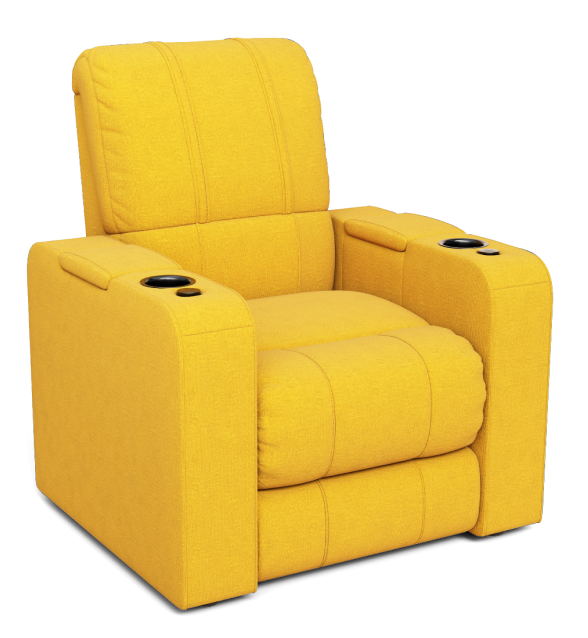Amazon has earned its reputation as one of the most potent online retail websites globally. Their product searches are second to none and have become an everyday phenomenon. This is because there are so many products to choose from, all of which get sold in one place. For a product to stand out, it needs a higher Amazon ranking.
The Amazon database is a powerhouse, and the search engine is a marvel of machine learning that is often comparable to Google’s. The database is also well-maintained and has information on products you wouldn’t expect to find anywhere else.
A better algorithm
There is a lot that Amazon has to offer, and hence its search engine has become a force to be reckoned with. Within the blink of an eye, you can find trendy footwear and to coolest hats from your phone.
Amazon’s algorithm is similar to Google‘s, and that is the primary reason most online retailers are moving to Amazon because the competition is much less. With this in mind, you must know how Amazon’s algorithm works and how you can leverage it to help your products get more visibility and boost your sales.

Amazon SEO vs. Google SEO
The search engine that searches through products is Amazon and not Google. This is because Amazon is in the business of selling products and not just information. It uses an algorithm called A9 and A10 after 2020 that looks for products that meet a buyer’s search criteria and are also positioned to make Amazon the most significant number of sales or revenue. In other words, if two ASINs are equally relevant to a user.
In other words, if two ASINs are equally relevant to a user’s query, but one offers Prime shipping—the Prime listing will likely appear higher up on search results. There are multiple reasons for this:
The amazing benefits
Amazon guarantees a quick and dependable delivery since the merchandise sold is fulfilled by Amazon FBA or a merchant selling on behalf of Amazon. As a result, sellers are more likely to be happy with their orders and return to make future purchases.
Amazon Prime offers free returns, which is an incredible draw for purchasers. As a result, if Amazon recommends a Prime product, a click is more likely to result in a sale.
Amazon factors in a list of factors that go beyond just matching your keyword to your product. Ratings, conversion rates, and even your account history are also considered. Ultimately, the company’s goal is to help them sell more products. They do this by recommending the best products possible – this is why it is essential to know your product inside and out and give it the care and attention it deserves.
On-Page and Off-Page Amazon SEO Factors
The Amazon SEO factors are both ON and OFF page factors that determine your ranking on Amazon. Off-page factors are out of your control and include Alexa Rank, Number of Reviews, Number of Verified Purchase Reviews, Number of H1 Tags, etc. On-page factors are factors that you can directly influence when creating your Amazon listing.
On-Page Amazon Ranking Factors
- Product category and attributes
- Content
- Price
- Relevance/keyword match
Off-Page Amazon Ranking Factors
- Conversions
- Stock availability
- Fulfillment method
- Reviews

4 Actionable Tips for Ranking Higher on Amazon
1. Ensure Easy Discoverability
Before you worry about keywords and the other well-known factors of ranking well on Amazon, you should check that nothing is amiss with your listing. Sellers should pay attention to these details to avoid throttling their visibility and sales by incorrectly mapping their product data or ignoring other technical issues with their Amazon listing.
To sidestep this, consider the following details.
1.1 Category
Amazon’s catalog is quite extensive, so selecting the most relevant category for your product is essential.
Please review Amazon’s Category Guidelines and their complete Category Overview to make sure you have selected the relevant category for your product. Avoid “Category Stretching” or selecting a category that is only loosely connected to your product in the hopes of reaching a larger audience; Amazon will likely hide your listing, therefore eliminating any possibility of gaming the system.
If your product catalog is extensive or there are a lot of categories to choose from, you can save time and money by leveraging the Amazon Catalog Tool. It uses a machine learning system to identify the most relevant category for your products. Our system also translates your product attributes for Amazon so that you can ensure that the right audience finds your product.
1.2 Advanced Attributes
The biggest mistake that some vendors make is providing only the most basic information about their products, placing their list at a significant disadvantage. This reduces your odds of appearing in filtered results pages (see below) or long-tail searches, but it also reduces your chances of conversion and raises your risk of an avoidable return. Make sure to include features that your consumers are likely to care about in addition to basic product facts. For example, if you offer body lotion, specify if it is suitable for sensitive skin, hypoallergenic, or has a botanical smell.
1.3 Variations, Kits, and Bundles
You’re undoubtedly aware of the numerous ways you can list your products on Amazon. Amazon allows you to combine similar ASINs into a variant listing, for example, displaying different colors of the same t-shirt under one item. You can maintain all of your product evaluations, photos, and content in one place, so shoppers don’t have to look elsewhere for the color/variation they want. This can increase the conversion rate of your product listing, but be sure to adhere to Amazon’s requirements.

2. Write Great Copy
Any Amazon listing must have an excellent copy. While most platforms restrict aggressively promotional language, Amazon is one where you should be upfront about your product’s specific qualities and benefits.
However, copy standards differ from marketplace to marketplace. Amazon offers a variety of copy expectations, constraints, and suggestions. This implies that you must consider the following to optimize text for Amazon SEO.
2.1 Product Name
Add a direct and to-the-point title to all product listings. A title is essential as it will appear in search results, product browse pages, and directly below your product image. In addition, your title will be used to generate your product URL, so be sure to include your brand and product name, as this is what customers will see in the search results.
For example, for small kitchen appliances, Amazon suggests including the brand name + model number + model name + product type and color. However, for bath towels, you need to give the following information: brand + line/pattern + material + product type + quantity.
If you’re not sure what to add, look at how your competitors label their items. Don’t use subjective content like “dreamy” or “wonderful,” spice up your headlines with unique product information.
2.2 Bullet Points
Bullet points are an essential part of your product description. They are intended to highlight your product’s unique and essential aspects. Listing out bullet points is also a great way to answer the most frequently asked questions your target consumers may have.
If you have an existing product, think about all the information you would want to know before buying it. What would be the first thing you want to know? What questions would you ask after you’d read the reviews? Write down the answers in bullet point form.
2.3 Product Description
First and foremost, you should be cautious about how you describe the product and include many details. Secondly, have information about the product that is easy to understand and informative. Limit the number of keywords and provide relevant information to the customer. The description should be brief and concise with pertinent details about the product.

3. Add a Bulk of Images and Media
Amazon is, quite obviously, an important e-retailer where virtually any product can be found. Amazon has some specific rules, and they vary by the market. Here are some of the things you need to know:
Amazon has strict rules about using images on your product page, and some guidelines are specific to Amazon.
3.1 Main Image
Add the main image to your product description: at least 2000 x 2000 px in size and a pure white background. Your main image must only show the product in its original packaging (if it has any) and must not include any people, text, or logos. If you sell DVDs, CDs, books, or other products that have artwork on them, you must use the artwork as your main image.
It is no secret that Amazon’s algorithm for ranking products is based on the number of clicks that the product receives. As such, the best images are not only compliant with Amazon’s requirements but also entice more buyers to click onto your listing, driving up your clickthrough rate (CTR).
3.2 Alternate Images
Alternate images are essential for converting clicks to sales. It is critical to select the correct product size. With internet buying, this may be tough. To that aim, there are several methods for utilizing other images:
1. Show the accurate dimensions/scale of your product
2. Show your product’s intended user(s)
3. Show how to utilize your product correctly
4. Highlight unique characteristics and benefits
5. Include a size chart
Demonstrate how your main product interacts with different accessories or goods consumers may purchase separately from you.
3.3 A+ Quality
A+ Content (formerly known as Enhanced Brand Content) is now accessible on Amazon to brand-registered merchants. Use A+ Content to liven up your listing and boost the amount of time a buyer spends on your product pages if it’s available to you.
To emphasize your identity, you may add comparison charts, bullet points, custom graphics, and other images to A+ Content. Show off your company’s and product’s differentiators, and answer the most often asked questions about your item.
While A+ Content has no direct influence on Amazon rankings, it does impact discussion rates.
4. Pitch the Best Offer
Amazon is in the business of selling, and a sale gets achieved when the customer meets all the right expectations. As a result, Amazon SEO considers your whole offering.
This includes a brand’s reputation, reviews, product quality, pricing, availability, and return policy.
4.1 Price
Finding the sweet spot between a competitive and profitable price is a skill. Aside from comparing your pricing to rivals’ prices, you’ll need to consider how much money you’ll spend on promoting or selling your goods. Manufacturing expenses, delivery charges, and costs connected with programs such as Amazon FBA must also be considered.
Suppose you sell your product on other eCommerce platforms. In that case, you must maintain parity in price between your different sales channels, as Amazon may flag you for selling your product at a lesser price elsewhere on the internet. In some cases, you may take a price drop to get your product off the ground. For example, you may execute a limited-time promotion for a new product launch or around the holidays.
4.2 Speed Of Shipping
The FBA program is a great way to offer Prime shipping to your customers. It provides a great way to gain a competitive advantage over other sellers.
The Amazon buyers have come to expect 2-day or 1-day shipping. Sellers need to offer the same service level, especially in hyper-competitive product categories.
If you can’t get your orders out the door quickly, consider using FBA or a 3PL (third-party logistics partner). You want to make sure you have a plan B if Amazon can’t service your team. If you can’t get orders out fast enough at any point, consider putting your listings on vacation mode.
4.3 Awards (Prime, Best Seller, etc.)
Badges are honorary titles bestowed to Amazon merchants for various reasons. They assist in increasing your exposure in search results by putting you on filtered pages (for example, sites filtered by environmentally aware businesses) and communicating to customers that you’re a reliable vendor.
As a third-party merchant, you can obtain the following Amazon badges:
• Best Seller • Amazon’s Choice • New Release • Climate Pledge Friendly • Limited-Time Deal, Lightning Deal, or Deal of the Day • Additional Savings, Coupon, and Discount
The latter two options were set up in Seller Central, where you can provide a limited-time discount or promotion. Take note of how these badges function and what you can do to get them.
Aim for Page One
The truth is that your product may be great, but without high-quality listings, it may never see the light of day on Amazon. Take the time to learn everything there is to know about Amazon SEO. Activate the listing quality flywheel and optimize your ASINs frequently to appeal to both buyers and Amazon’s unique system.
Chat with us if you need assistance getting your listings off the ground. Learn how Tulfa can help you improve your product listing on Amazon and others.
Trust the expert
Tulfa is an interactive design agency that creates visually striking digital solutions. As strategists, we advise on global positioning, brand voice and SEO, and as artisans, we develop and build immersive digital assets.
Our purpose is simple yet critical: increase acquisition, maximise retention, and enhance monetisation. We achieve our objectives with enthusiasm, innovation, and originality.
Augmented Reality, 3D Modeling, 3D Photography, Product Imagery, Rich Media, Creative Content, and other techniques are used by our creative professionals to generate immersive experiences, especially for Amazon.
To learn more about us, please contact: hello@tulfa.com



